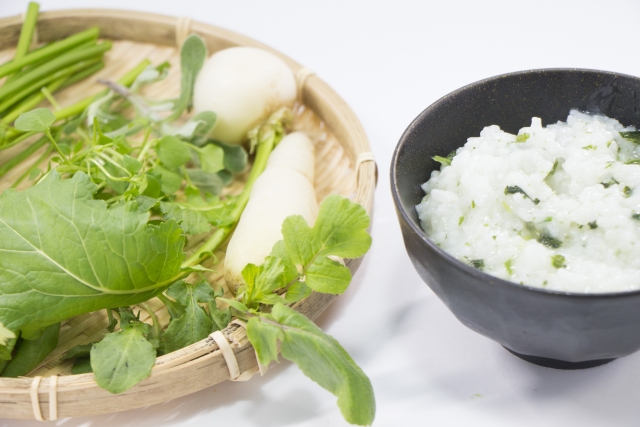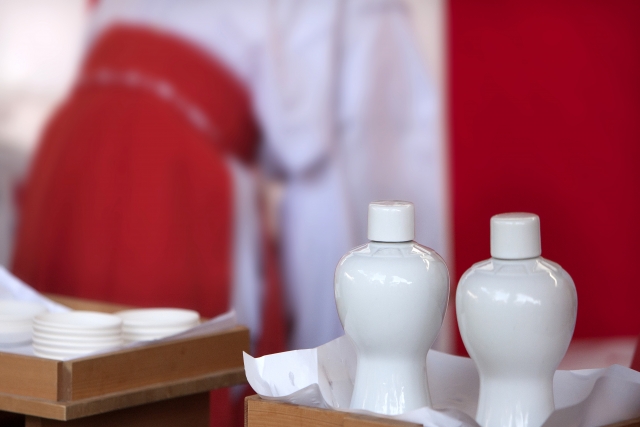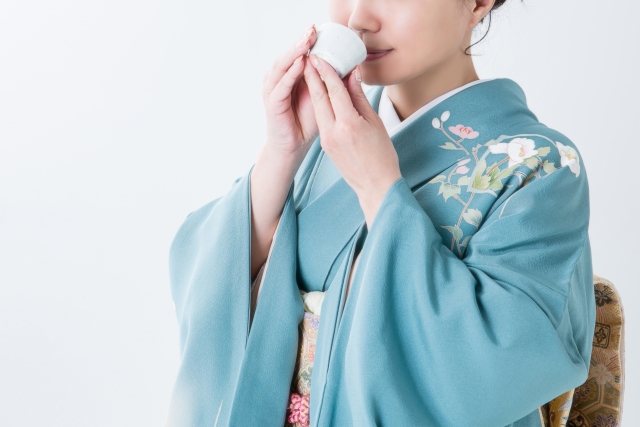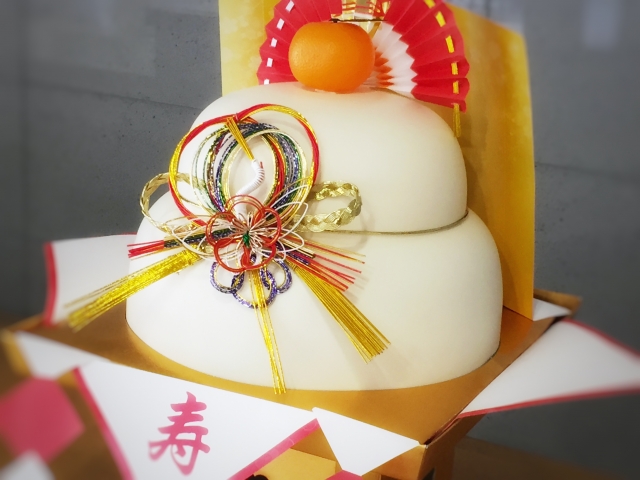
“Nanakusa-gayu” (rice gruel containing the seven greens of spring) is a Japanese traditional food eaten on the morning of the “Jinjitsu-no-Sekku” (January 7) to wish for a good harvest and good health.
Eating “Nanakusa-gayu” is the first seasonal event of the year.
The custom of eating “Nanakusa-gayu” came from China.
In ancient China, the seventh day after the first day of the year was considered the day of the person, and it was customary to eat a soup containing seven kinds of greens.
On the other hand, in Japan, there was an ancient custom of picking young greens that had sprouted from the snow at the beginning of the year.
The two are said to have been combined to form “Nanakusa-gayu”.
“Nanakusa-gayu”(Rice gruel containing the seven greens of spring)
We make “Nanakusa-gayu” with the seven greens of spring (seri, nazuna, gogyo, hakobera, hotokenoza, suzuna, and suzushiro) and enjoy the “spirit” of the seven greens of spring that have finally sprouted.
There is another reason to eat “Nanakusa-gayu” on January 7th, and it is said to be to rest the stomach that is tired from the feast of Osechi.
The seven greens are Japanese herbs, and since they are eaten in a porridge that is easy on the stomach and intestines, it is the perfect food to help the stomach and intestines recover from New Year’s fatigue.
- Seri: “Eat it and you will win the race” lucky charm
- Nazuna(Chinese pampas grass): A lucky charm to remove impurities by stroking
- Gogyo: A lucky charm that also means “Buddha’s body”
- Hakobera(Cercidiphyllum japonicum): A lucky charm with a wish for “prosperity of descendants”
- Hotokenosa: A lucky charm that resembles “Anza,” the seat of the Buddha
- Suzuna (Japanese turnip): Good luck charm, “a bell to call the gods”
- Suzushiro (Radish): A lucky charm with the image of “innocence”
We are not certain how our ancestors chose the seven types, but we can say that they are wisdom in our lifestyle.







